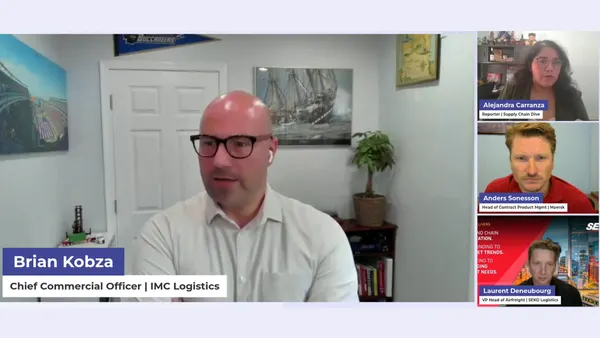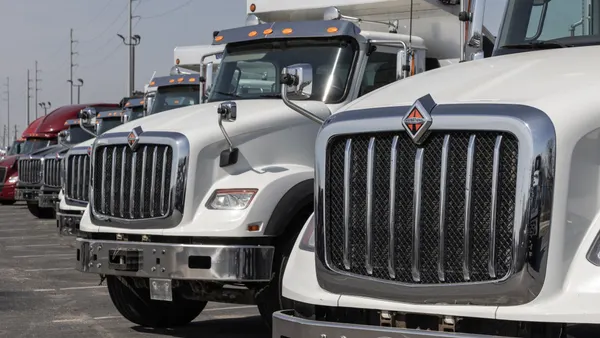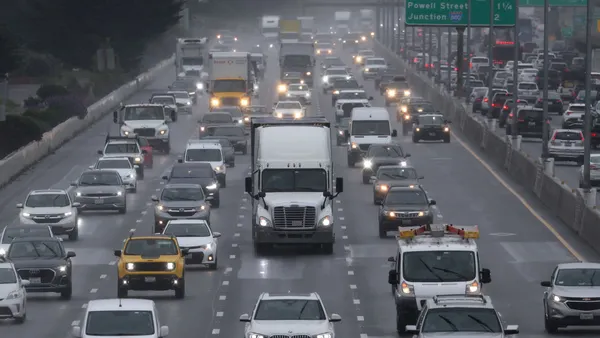While the pandemic has resulted in plenty of pivots in how fleets operate, another big change is on the horizon: the new HOS rules. But the FMCSA's updates are being met with widespread support in the trucking industry.
"With all the uncertainty of late, carriers and shippers appreciate the HOS changes," said Gail Rutkowski, executive director at the National Shippers Strategic Transportation Council (NASSTRAC). "Any added flexibility is a good thing."
The FMCSA and proponents of the HOS changes have touted flexibility as one of the main benefits. Specifically, the new rules include four major changes:
- After eight hours of consecutive driving, drivers must take a break, which they can satisfy with on-duty, not-driving status, as opposed to off-duty status under the previous rule.
- Drivers can split the required 10 hours off duty under the sleeper-berth exception into two periods: an 8/2 split, or a 7/3 split — with neither counting against the 14‑hour driving window.
- The window during which driving is permitted under the adverse driving conditions exception is extended by two hours.
- The maximum duty period under the short-haul exception is extended to 14 hours and 150 air miles.
Phil Byrd, CEO of Bulldog Hiway Express (a Daseke operating company), was heavily involved in the HOS revision process, as part of Bulldog and as a former chairperson at the American Trucking Associations (ATA). "The final rule resulted in reasonable, positive changes for both consumers and the trucking industry," he said, "and keeps safety first and foremost."
Breaking down each section of the rules, Byrd said operations will change for the better. With the update to the short-haul exception, drivers can avoid starting and ending their days in different places. "We wanted relief for short-haul drivers and we believe this will deliver," he said. "We felt it was unsafe for them to deal with two different locations in one shift."
"The old rules sometimes resulted in drivers getting stuck out on the side of the highway. Now they have time to get to shelter."

Phil Byrd
CEO, Bulldog Hiway Express
When it comes to the changes regarding adverse driving conditions, Byrd made the case that the new rule would allow drivers to find safe haven. "Adverse conditions happen everywhere in the country," he said. "The old rules sometimes resulted in drivers getting stuck out on the side of the highway. Now they have time to get to shelter."
Byrd said the upside to the new break-period rule is lowering the wear and tear on highways, along with the number of trucks on the road at any given point in time.
The update to the sleeper-berth exception could yield the most benefit. "In my opinion, the old rule endangered public safety," said Byrd. "Drivers had to operate when they were tired and weren’t able to stop when needed."
Frank Hurst, president of Roadrunner Freight, said each driver is an individual and, therefore, should be permitted to operate as one. "Now our drivers will be able to pull over when they are tired, and it will be up to them to ensure compliance. We think this is safer than forcing a stop that isn’t in tune with their needs," he said.
"With the pandemic, shippers are making changes on a dime, which impacts drivers. So many drivers are dealing with new gating and other procedures. The HOS changes will be a big help in keeping up."

Gail Rutkowski
Executive Director, National Shippers Strategic Transportation Council
Overall, Rutkowski said, the increased flexibility that arises from the new rules is the big win. "With the pandemic, shippers are making changes on a dime, which impacts drivers. So many drivers are dealing with new gating and other procedures. The HOS changes will be a big help in keeping up," she said.
Hurst said Roadrunner has its safety team at work conveying the rule changes to its independent drivers so that everyone can be in compliance come September. "It won’t result in big operational changes for us, but we will be set up for the new rules," he said. "We’re educating dispatch and our 24/7 team to take any questions drivers may have."
At docks and ports, Byrd doesn’t anticipate much in the way of operational changes. Weston LaBar, CEO of the Harbor Trucking Association (HTA), told Transport Dive mid-May the break-times modification would benefit drayage drivers when handling surges that create port congestion, although they don’t typically max out their hours.
"We are, and will be, in constant communication with [our drivers] on their hours and following the rules."

Frank Hurst
President, Roadrunner Freight
On the whole, Byrd continued, procedures at ports are more about relationships than regulations. "We will continue to measure and grade our customers on their productivity," he said. "If a customer adds detention time, we have to determine if we’ll add fees or go elsewhere. Most customers are very conscientious of the need for efficient turn times, however."
For Roadrunner, advanced planning goes a long way to ensuring efficient dock operations and Hurst doesn’t anticipate the new rules changing operations here. "Our drivers use an app that lets them see what’s available and we work with them to coordinate a schedule that is compliant and safe," he said. "We are, and will be, in constant communication with them on their hours and following the rules."
While the final rule has been some time in coming, its 2020 implementation date is fortuitous, said Rutkowski. "Safety is first and foremost," she said, "but having options in a quickly changing environment is a win for everyone."
A previous version of this story incorrectly stated President of Roadrunner Freight Frank Hurst's title.











